An Easter Egg Quilt Block is a great addition to a pillow set, table runner or quilt (of course!). You could also bind the quilt block and use it as a potholder or decorative place mat for Easter.
Combine free-motion stitching with paints and learn from Eric Drexler how to create your own Easter Egg Quilt Block work of art.
This Easter Egg Quilt Block combines free-motion stitching with custom paints for a truly unique block. If you’re new to free-motion stitching or need a refresher, Eric takes takes you through the process in his video course, Fearless Free Motion. If you want to learn more and have virtual hands-on instruction, download his course today.
On to the quilt block!
From Eric:
SuppliesÂ
- Entire egg pattern or individual egg patterns
- 10“ square of White PFD Fabric
- Border and Fabric 2 – 3 ½“ X 9 ½“ and 2 – 3 ½“ X 15 ½“
- 18†square each of backing Fabric & Quilter’s Dream cotton batting
- KK 2000 Temporary Spray adhesiveÂ
- Sulky Stick ‘n Stitch (also known as Sticky Fabri-Solvy) Â Stabilizer (optional)
- Heat-removable fabric marker
- Tskineko Inks: Color 97 Sedona Clay (basket); Color 11 Lemon Yellow (eggs); Color 93 Blue (eggs); Color 60 Green Caladon (eggs); Color 61 Burgundy (pink bow & eggs)
- Aloe Vera Gel (Clear)
- Fine art brushes
- Paint palette
- Sulky 50 Wt. Cotton + Steel Thread in Black
- Sulky 50 Wt. Cotton + Steel Thread in Pink (sashing & binding)
- 80/12 Topstitch needle
- Collins Sewers Aid (apply to needle if using Sulky Stick ‘n Stitch/Sticky Fabri-Solvy)
Prepare the Easter Egg Quilt Block
Trace the pattern for the eggs or the entire pattern using a Wafer 2 lightbox and removable marking pen. Or print out either drawing onto Sulky Stick ‘n Stitch.
Use Pink Sulky 50 Wt. Cotton + Steel Thread to sew the Left and Right sashing strips to the Center. Then sew the top and bottom sashing strips.
Spray Sulky KK 2000 to secure the quilt square, batting, and backing together.Â
Wind a bobbin with Black Sulky 50 wt. Cotton + Steel and thread the machine with the same thread.Â
Set up the machine for Free-Motion by lowering the feed dogs, installing an 80/12 topstitch needle and the correct presser foot. Refer to the machine manual for instructions specific to your machine model.Â
Stitching the Easter Egg Quilt Block
Stitch along all the lines. Use some single and some double straight stitches to give dimension.Â
(If using Sulky Stick ‘n Stitch, remove it at this time under running water. Make sure the fabric is good and dry before proceeding to the next step.)Â
Painting the Easter Egg Quilt Block
Create each color mixture with a little less than a Teaspoon of Aloe Vera Gel. Add one drop of ink to the gel. Mix thoroughly and test on a scrap piece of material. Add more Aloe to lighten, or more ink to darken.Â
Then paint each color onto the basket, bow and eggs as desired.
Then apply a hot iron and a paper towel to the fabric to fix the ink for good.Â
Finally, quilt the sashing using the leftover egg designs. Then bind the block as desired.

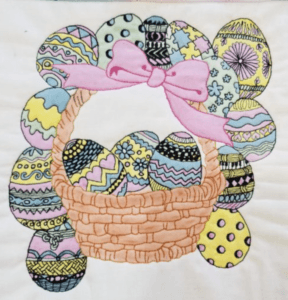

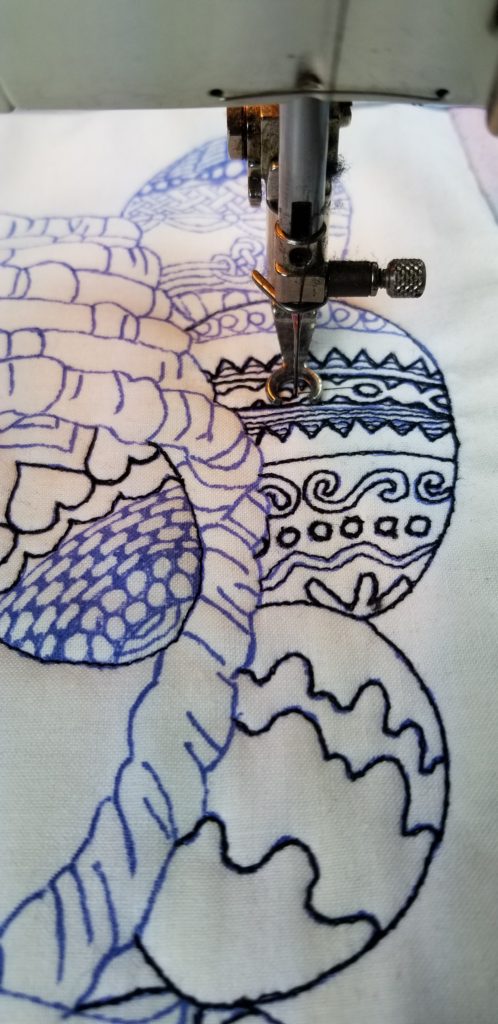
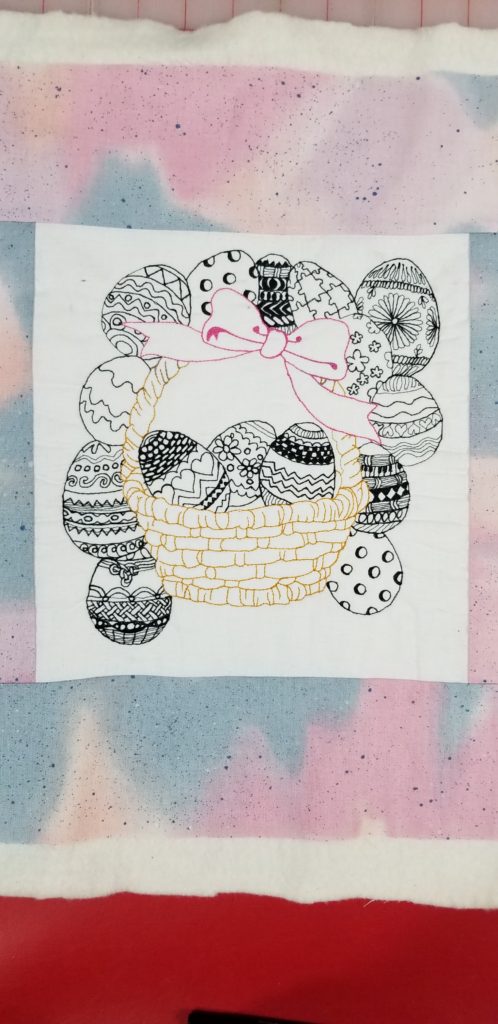
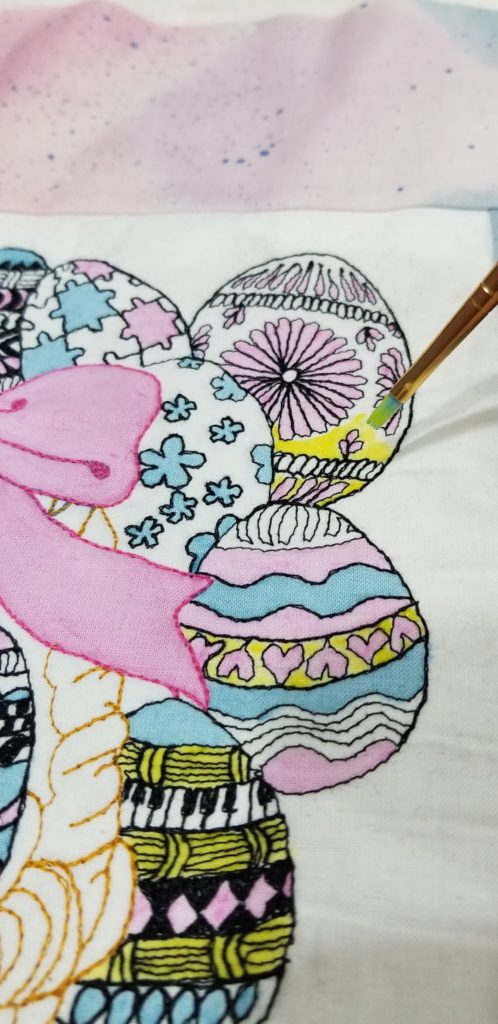
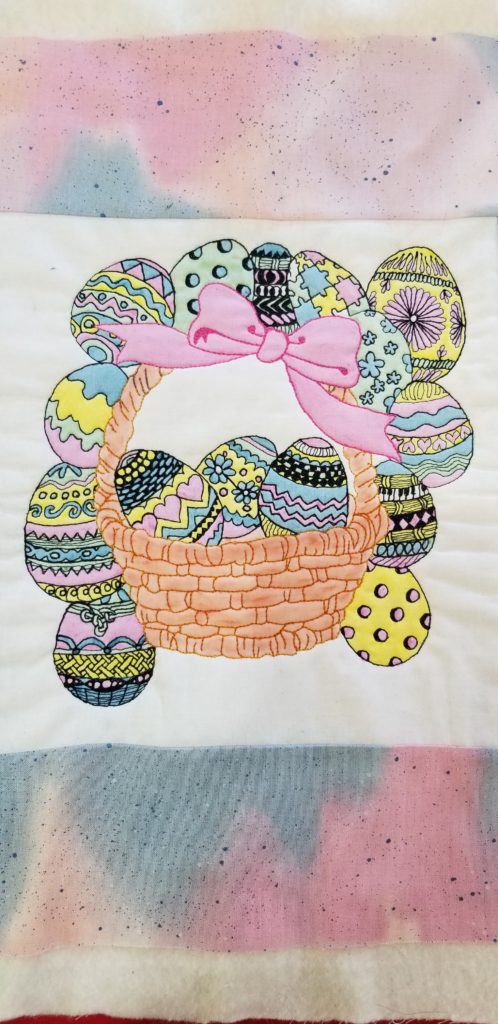

Could you please tell me what PFD fabric is? Thank you.
Hoffman Prepared for Dyeing (PFD) is 100% mercerized cotton fabric, with 220 thread count, which contains no finish or sizing. It provides the ideal canvas for your artistic endeavors, and is preferred by most dyers.
Eric’s artwork is truly amazing. Love the idea of painting fabric.